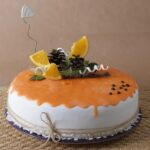Cake decorating is a crucial aspect of creating visually stunning and delicious cakes for various occasions. One of the key factors in successful cake decorating is choosing the right icing.
Whether you’re a seasoned baker or just starting out, understanding the different types of icing and their uses can significantly enhance your cake decorating skills. In this article, we will delve into the world of cake icing, exploring the various options available and providing insight into which one would best suit your specific needs.
When it comes to cake decorating, selecting the best icing can make all the difference in achieving a professional and visually appealing result. Different types of icing offer distinct textures, flavors, and versatility, making it essential to have a good grasp of each option’s characteristics. With an abundance of techniques and styles involved in cake decoration, knowing which icing to use for specific designs can elevate your creations to new heights.
In this comprehensive guide, we will discuss the importance of choosing the right icing for cake decorating and provide an overview of different types commonly used by bakers and decorators. From buttercream to fondant, royal icing to ganache, each type offers unique benefits that cater to specific preferences and requirements.
Additionally, we will examine the pros and cons of each type of icing and offer recommendations based on individual project needs. With expert insights into best practices for using various types of icing as well as inspiring case studies featuring successful decorations achieved using different options, readers will gain valuable knowledge for their future cake decorating endeavors.
Types of Icing for Cake Decorating
When it comes to cake decorating, choosing the right icing is crucial to achieving the desired look and taste of the final product. There are several types of icing commonly used for cake decorating, each with its own unique characteristics and best uses. In this section, we will explore the different types of icing and provide a detailed description of each.
Buttercream
One of the most popular choices for cake decorating, buttercream icing is versatile and easy to work with. It is made from butter or shortening, powdered sugar, and flavorings such as vanilla or chocolate. Buttercream can be piped into intricate designs or smoothed onto cakes for a clean finish. Its creamy texture and ability to hold shape make it ideal for various cake decorating techniques.
Fondant
Fondant is a smooth, pliable icing that can be rolled out and draped over cakes to create a flawless, polished look. It has a sweet flavor and a chewy texture, making it popular for wedding cakes and special occasion cakes. Fondant can also be shaped into 3D decorations or molded into intricate designs, making it a favorite among professional cake decorators.
Royal Icing
Royal icing is made from egg whites or meringue powder, powdered sugar, and lemon juice. It dries to a hard finish, making it perfect for creating delicate details such as lacework, flowers, and piping intricate designs onto cakes. While royal icing provides a beautiful finished look, it can be challenging to work with due to its quick-drying nature.
Ganache
Ganache is a rich mixture of chocolate and cream that can be used as both frosting and filling for cakes. It has a smooth, glossy appearance when set and offers a decadent flavor that pairs well with various cake flavors. Ganache is ideal for creating drip designs on cakes or achieving a flawless chocolate-coated finish.
As you consider what type of icing would work best for your cake decorating project, keep in mind the specific requirements of your design, as well as the climate in which you will be working. Each type of icing has its own advantages and limitations, so it’s essential to select the one that aligns with your vision for the final product.
Pros and Cons of Each Type of Icing
When it comes to cake decorating, choosing the right type of icing is essential in achieving the desired look and flavor for your creation. There are several options to consider, each with its own unique set of pros and cons.
Buttercream is a popular choice for cake decorating due to its smooth texture and versatility. It is easy to work with and can be flavored in various ways, making it suitable for different cake designs and tastes. However, buttercream can melt in warm temperatures, so it may not be ideal for outdoor events or hot climates.
Fondant is another commonly used icing that provides a sleek and polished finish to cakes. It allows for intricate designs and decorations, but some people find its taste too sweet or dislike its chewy texture. Additionally, fondant can be challenging to work with for beginners.
Royal icing is known for its ability to harden, making it perfect for creating ornate details on cakes and cookies. It sets quickly, allowing decorators to build intricate structures without fear of their creations collapsing. On the downside, royal icing tends to dry out quickly as well, making it challenging to use over extended periods.
Ganache offers a rich and decadent option for cake decorating with its smooth and glossy appearance. It is particularly suitable for pouring over cakes or creating a chocolate glaze effect. However, ganache can be heavy and may not hold up well in warmer conditions.
| Icing Type | Pros | Cons |
|---|---|---|
| Buttercream | Versatile; Easy to Flavor; Smooth Texture | Can Melt in Warm Temperatures |
| Fondant | Sleek Finish; Allows Intricate Designs | Sweet Taste; Chewy Texture; Challenging to Work With |
| Royal Icing | Harden Quickly; Ideal for Ornate Details | Dries Out Quickly; Challenging For Beginners |
When choosing the best icing for cake decorating, it’s essential to consider these factors carefully along with your specific baking needs and preferences. Each type of icing has its strengths and weaknesses, so understanding them will help you make an informed decision on what suits your particular project best.
Factors to Consider When Choosing Icing for Cake Decorating
When it comes to choosing the best icing for cake decorating, there are several important factors to consider. One of the most crucial factors is the climate in which the cake will be displayed and served. For example, buttercream icing is a popular choice for cake decorating, but it may not hold up well in hot and humid conditions. In such cases, fondant or ganache may be better options as they are more heat-resistant.
Another factor to keep in mind is the desired design of the cake. If intricate details and decorations are needed, royal icing or fondant may be the best choices due to their ability to hold shapes and textures well. On the other hand, if a simple and classic look is preferred, buttercream can be a versatile and delicious option.
Furthermore, considering the flavor profile of the cake is essential when choosing icing for cake decorating. While buttercream icing is known for its rich and creamy taste, some bakers and customers may prefer the smoother and sweeter flavor of fondant. Ganache, on the other hand, offers a decadent chocolatey taste that pairs well with certain cake flavors.
Ultimately, understanding these factors will help decorators make informed decisions about which type of icing to use for their specific cake decorating needs.
| Factors to Consider | Recommendations |
|---|---|
| Climate | Fondant or ganache for hot and humid conditions |
| Design | Royal icing or fondant for intricate designs |
| Flavor Profile | Consider buttercream for a rich taste; fondant for a sweeter option; ganache for a chocolatey flavor |
Best Practices for Using Different Types of Icing
Tips for Using Buttercream Icing
Buttercream icing is a popular choice for cake decorating due to its smooth texture and creamy taste. When using buttercream icing, it’s essential to ensure that the cake is properly chilled before applying the icing. This will help create a smooth surface and prevent crumbs from mixing into the icing. Additionally, using a bench scraper or offset spatula can help achieve an even coating of buttercream on the cake.
Techniques for Working With Fondant
Fondant is known for its ability to create flawless, polished looks on cakes. However, working with fondant requires specific techniques to avoid tearing or stretching the material. Kneading the fondant well before rolling it out ensures pliability and minimizes cracking. When covering a cake with fondant, gently smooth out any air bubbles using a fondant smoother tool for a seamless finish.
Mastering Royal Icing Decorations
Royal icing is commonly used for intricate decorations such as piping flowers and intricate designs on cakes. To achieve professional-looking results with royal icing, it’s crucial to practice consistent pressure when piping and allow each layer of decoration to dry completely before adding additional details. A steady hand and patience are key when working with royal icing.
When implementing these best practices for using different types of icing, it’s important to consider not only the aesthetics but also the flavor profile of the final product. By understanding these techniques and incorporating them into your cake decorating projects, you can ensure visually stunning and delicious creations that leave a lasting impression.
Case Studies
When it comes to cake decorating, the type of icing used can truly make or break the final result. To showcase the versatility and potential of different icing options, let’s explore some success stories where each type of icing was utilized to create stunning cakes.
Buttercream icing has long been a favorite among home bakers and professionals alike for its smooth texture and sweet flavor. Whether it’s piping intricate designs or creating smooth finishes, buttercream can do it all. One notable success story is a wedding cake adorned with delicate buttercream flowers that looked almost too perfect to be real. The versatility of this icing allowed for intricate detailing and a beautiful finished product that left guests in awe.
Fondant may seem daunting to work with, but when used skillfully, it can create show-stopping cakes that are almost too beautiful to eat. One success story that stands out is a themed birthday cake covered in fondant to resemble a popular cartoon character. The clean lines and vibrant colors were achieved with fondant, bringing the beloved character to life in cake form.
Royal icing is commonly used for intricate piping work and delicate decorations. Imagine a stunning Christmas-themed cake adorned with meticulously piped snowflakes made from royal icing. This success story brought winter wonderland vibes to the dessert table and showcased the precision and beauty that royal icing can bring to cake decorating.
Ganache is often favored for its decadent chocolate flavor and smooth, glossy finish. A noteworthy success story involves a rich ganache-covered cake adorned with fresh berries, creating an elegant yet indulgent dessert centerpiece. This example highlights how ganache can elevate simple decorations and bring sophistication to any cake design.
These success stories showcase the incredible potential of different types of icing for cake decorating. By understanding their unique characteristics and best uses, you can confidently choose the best icing for your next cake decorating project based on your specific needs and desired outcome.
Expert Recommendations for Specific Cake Decorating Projects
When it comes to cake decorating, choosing the right icing is crucial for bringing your vision to life. Different types of cake projects may call for specific icing that can best achieve the desired look and taste. To help you make an informed decision, we have consulted with professional bakers and cake decorators to gather their recommendations on the best icing to use for specific cake decorating projects.
Wedding Cakes
For wedding cakes, a popular choice among professionals is fondant. Its smooth and elegant appearance makes it perfect for creating a clean canvas for intricate designs. Additionally, fondant holds up well in various weather conditions, making it ideal for outdoor or summer weddings. Another recommendation for wedding cakes is Swiss meringue buttercream, known for its silky texture and ability to hold shape when piped into decorative details.
Birthday Cakes
When it comes to birthday cakes, buttercream icing is commonly recommended by experts. Its creamy texture allows for easy application and versatility in creating fun and colorful designs suitable for birthday celebrations. Some professionals also suggest using ganache as an alternative option, especially for more sophisticated and adult-themed birthday cakes.
Themed Cakes
For themed cakes, royal icing is often suggested by experienced bakers due to its ability to create intricate details and delicate decorations. It hardens quickly when exposed to air, making it great for creating stand-up figures or 3D elements on themed cakes such as character-inspired designs or seasonal motifs like Halloween or Christmas themes.
By taking into account these expert recommendations, you can confidently select the best icing for your specific cake decorating project based on the theme, design intricacy, and overall desired aesthetic.
Conclusion
In conclusion, choosing the best icing for cake decorating is a crucial decision that can significantly impact the overall look, taste, and success of your cake. After exploring the various types of icing available, it becomes clear that each option has its own unique advantages and disadvantages. Buttercream offers a creamy texture and delicious flavor, while fondant provides a smooth and elegant finish.
Royal icing is ideal for intricate designs, and ganache delivers a decadent chocolatey taste. Determining the best icing to use for cake decorating ultimately depends on factors such as the desired design, climate, and flavor profile of the cake.
When considering these factors, it’s important to also take into account expert recommendations and best practices for using different types of icing. By learning from successful case studies and seeking advice from professional bakers and cake decorators, you can gain valuable insight into how to achieve stunning results with your chosen icing.
Whether you are working on a wedding cake, birthday cake, or themed cake project, understanding the specific recommendations for each type of icing can help you make an informed decision.
In the end, making the right choice for your cake decorating needs comes down to carefully considering all aspects discussed in this article. By taking into account all relevant factors and seeking expert guidance when needed, you can confidently select the best icing for your next cake decorating project.
With the right icing in hand and armed with knowledge on how to use it effectively, you can elevate your cake decorating skills and create visually stunning and delectable masterpieces that will impress everyone who sees (and tastes) them.
Frequently Asked Questions
What Frosting Do Professionals Use for Cakes?
Professionals often use buttercream frosting for cakes because it is easy to work with and holds its shape well. It can be flavored and colored to fit any cake design or flavor.
Which Frosting Is Best for Decorating a Cake?
The best frosting for decorating a cake is buttercream because of its versatility and ability to hold intricate designs. Its smooth texture makes it perfect for creating smooth finishes or detailed piping.
What Is the Best Icing to Practice Cake Decorating?
When practicing cake decorating, royal icing is often recommended because it sets hard, making it easier to handle and create various shapes and designs. Its consistency allows for precise piping and detailing without melting or spreading.

Welcome to my blog about home and family. This blog is a place where I will share my thoughts, ideas, and experiences related to these important topics. I am a stay-at-home mom with two young children. I hope you enjoy reading it! and may find some helpful tips and ideas that will make your home and family life even better!





